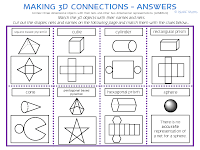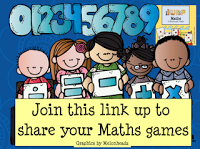This week we are adding another set of Loop Cards to those we already have available.
This set is aimed at Level 4 (& above) and includes multiplication and division problems up to 10 x 10.
All Loop Cards will be at the new price of $1 until the end of the year!
Loop Cards available include:
- Level 3 - Addition & Subtraction
- Level 3 - Multiplication & Division (2's, 3's, 5's & 10's)
- Level 4 - Multiplication (up to 10 x 10)
- Level 4 - Multiplication & Division (up to 10 x 10)
- Level 5 & 6 - Mixed Addition, Subtraction, Multiplication, Fractions & Percentages
Loop Cards are a great
way to engage your whole class in a fun and challenging activity!
These
Loop Cards are created for use in the ‘Fluency’ component of an iSURF lesson,
based on multiplication/division. Loop Cards are a great way to start a class
discussion about the most efficient strategies for mental computation.
Print
Loop Cards onto coloured cardboard, laminate and cut around each card.
How to
use in the classroom…
·
share out loop cards (28
in total) amongst whole class (if there are extras – give two to students with
start/end cards and then others. Cards must all be in use for the loop
to be complete)
·
set your stopwatch to
00:00:00. When ‘start’ is called, begin timing
·
ask the student with the
start card to say ‘start’ and then read their question out
·
the class (mentally)
works out what the answer will be and checks their own card
·
if they believe their
card has the correct answer to the question asked – they call out the
answer
·
if there are no immediate
objections to their answer, they ask the question on their card
·
objections can be lodged
by calling out ‘OBJECTION’ - the clock is stopped. The objection is discussed.
If correct - the clock continues, if incorrect – 10 seconds is added to the
final time
·
the cycle continues,
until the last answer is given and the card with ‘END’ is reached
·
record the time and try
to beat it each time you use this set of Loop Cards.
* Individual
students, in need of extra practice or extension, can complete the cards by
themselves.
* Loop
Cards can also be used as a ‘pre’ and ‘post’ assessment tool to gather
anecdotal evidence about how a class/individual is travelling with the concept
you are currently teaching.
*
Cards towards the end of the set may be more challenging. Identify these with a
small mark/sticker and distribute to students in need of extension.
* If
using multiple sets of Loop Cards in the classroom (each with a different
concept), copy them onto different coloured cardboard to ensure they do not get
mixed up.
Happy Looping!

























